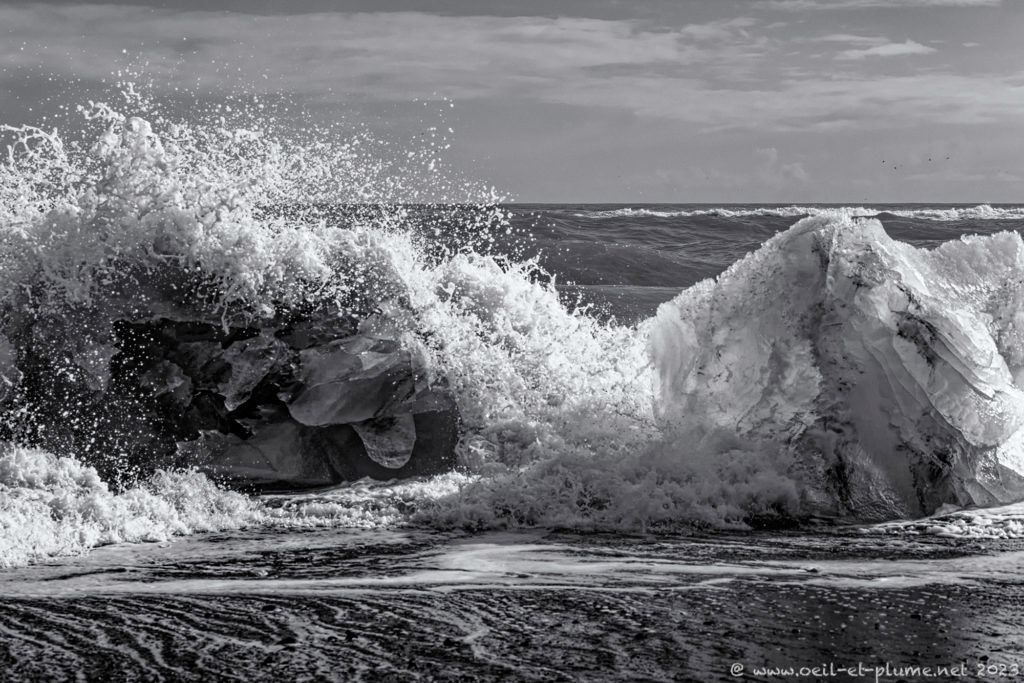Ice is consubstantial with Iceland. Water is plentiful and temperature is cold enough there to produce or to maintain ice all year long. Henceforth, Iceland’s landscapes feature icebergs, icy cliffs, ice-capped lakes and rivers, as well as glacier lagoons and natural glacier ice caves.
Many icebergs floating all around Iceland come from the Denmark Strait which connects the Atlantic Ocean and the Arctic Ocean between Iceland and Greenland. However, most of the icebergs found along the southern coast of the island have broken off from Iceland’s inland glaciers.
Ice can be found in many places in Iceland’s soil even in spring period, as it still covers parts of the many lakes and rivers. Deep into the glaciers, underground rivers dig ephemeral natural ice caves with dramatic shapes and colours. I would have liked visiting one of them. In turn, I met ice stalactites and stalagmites in lava caves where it fuses beautifully with solidified and colourful magma.
I love the points of transition between the fundamental natural elements of our Planet as they irradiate high amounts of energy that are fascinating to capture and to interpret photographically.
Iced plants or rocks transition between earth and water. Conversely, waves splashing against coastal rocks transition between water and earth. Icebergs reaching sea water transition between rain water and sea water. Iced landscapes connect also with bacterial, vegetal, animal and human life.
I was keen to explore all those points of transition in Iceland.
Iceland is not immune to the effects of the ongoing climate changes. In recent decades, glaciers melted at high pace, unleashing enormous amounts of ice during the warmer months of the year. As a direct outcome, some wildlife species and local traditions of Icelandic people are put at risk.
Cheers,
































